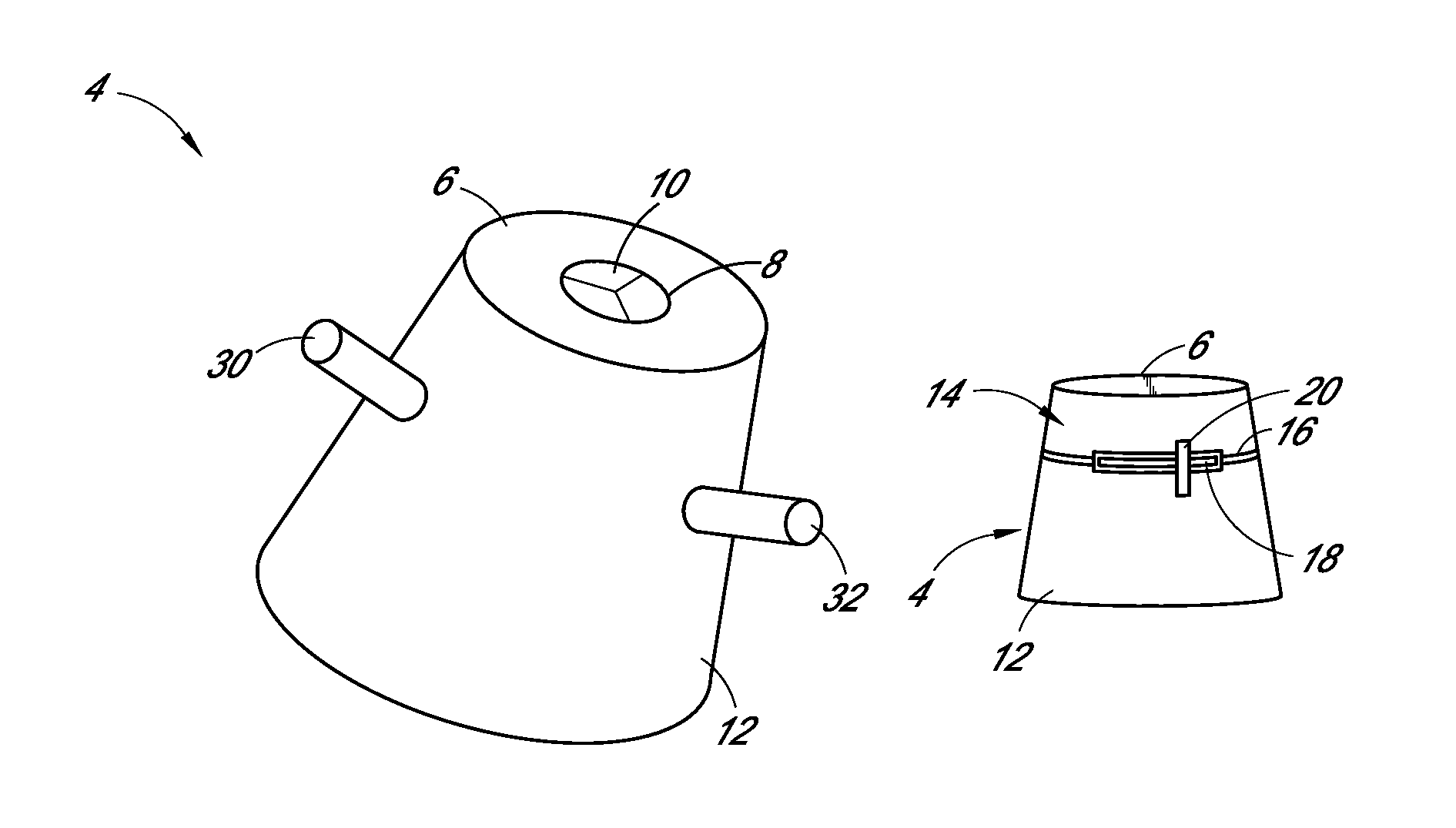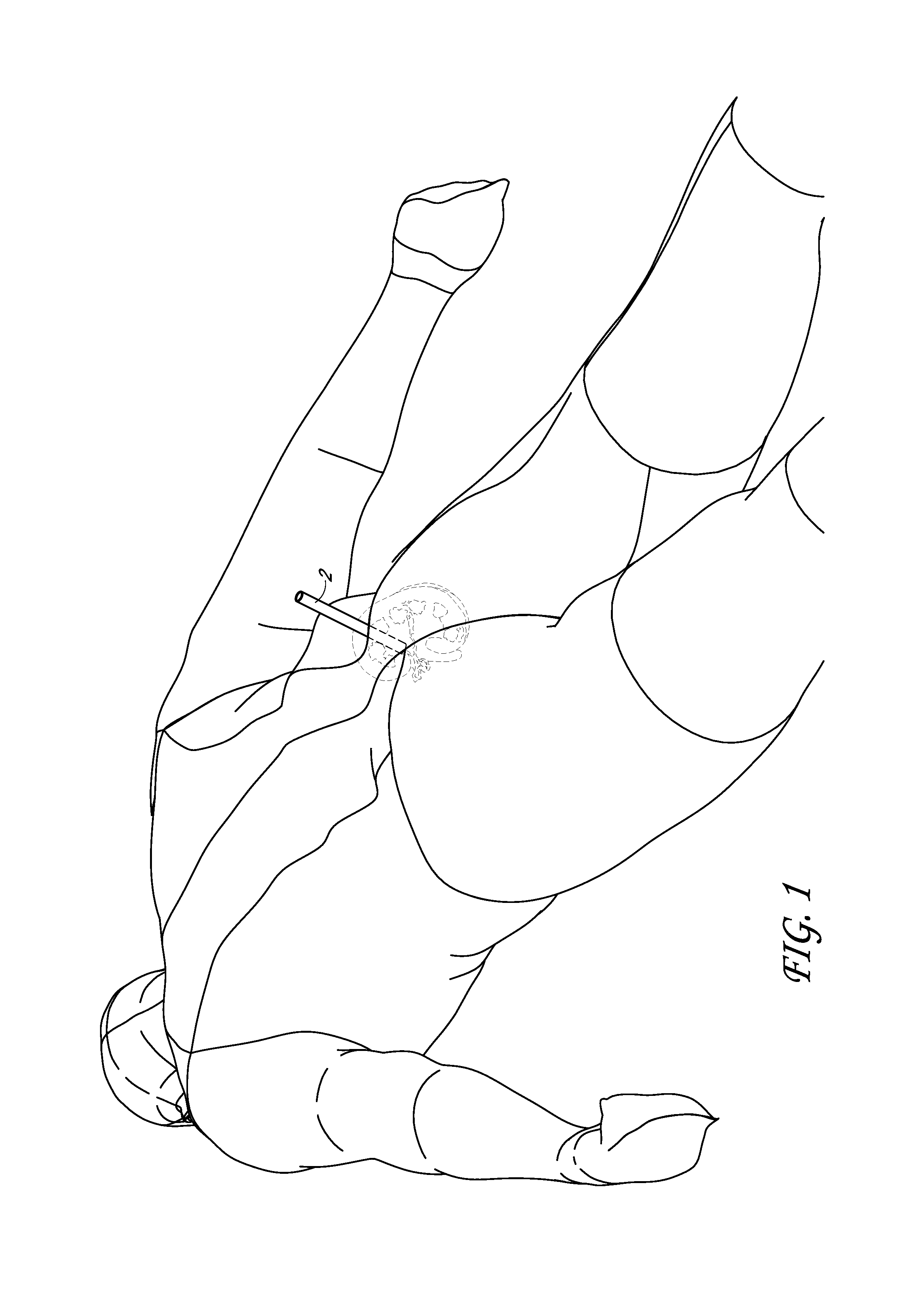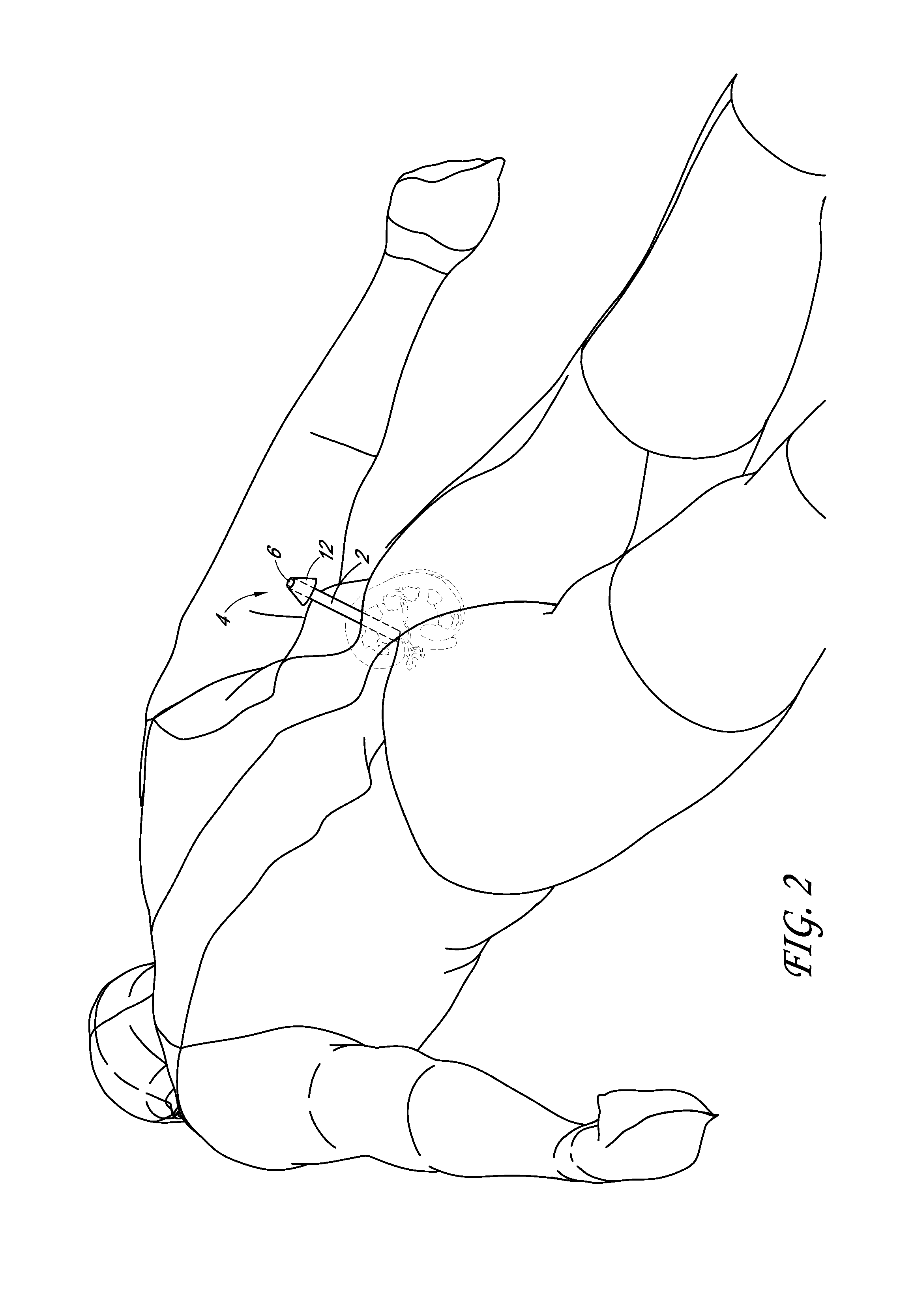Controlled pressure endoscopic and percutaneous surgery
a percutaneous surgery and controlled pressure technology, applied in the field of closed percutaneous surgery, can solve the problems of premature termination of the procedure, affecting the efficiency of the operation, and consuming the time of one staff member, so as to facilitate the rapid flow of irrigation. , the effect of minimal bleeding
- Summary
- Abstract
- Description
- Claims
- Application Information
AI Technical Summary
Benefits of technology
Problems solved by technology
Method used
Image
Examples
example embodiments
[0125]The following example embodiments identify some possible permutations of combinations of features disclosed herein, although other permutations of combinations of features are also possible.
[0126]1. A sheath cap assembly configured to enclosed a proximal end of a sheath, the cap comprising:[0127]a main body portion comprising:[0128]a wall portion shaped to surround the proximal end of the sheath;[0129]a closed proximal end portion; and[0130]an open distal end portion;[0131]an inflow port on the main body portion, the inflow port providing access from an irrigation source to a lumen of the sheath when the sheath cap is secured to the sheath;[0132]an outflow port on the main body portion, the outflow port providing an outlet for fluid flowing out of the sheath when the sheath cap is secured to the sheath;[0133]a pressure sensor connected to the sheath cap, the pressure sensor configured to generate a pressure measurement; and[0134]a processing unit configured to direct fluid thr...
PUM
 Login to View More
Login to View More Abstract
Description
Claims
Application Information
 Login to View More
Login to View More - R&D
- Intellectual Property
- Life Sciences
- Materials
- Tech Scout
- Unparalleled Data Quality
- Higher Quality Content
- 60% Fewer Hallucinations
Browse by: Latest US Patents, China's latest patents, Technical Efficacy Thesaurus, Application Domain, Technology Topic, Popular Technical Reports.
© 2025 PatSnap. All rights reserved.Legal|Privacy policy|Modern Slavery Act Transparency Statement|Sitemap|About US| Contact US: help@patsnap.com



